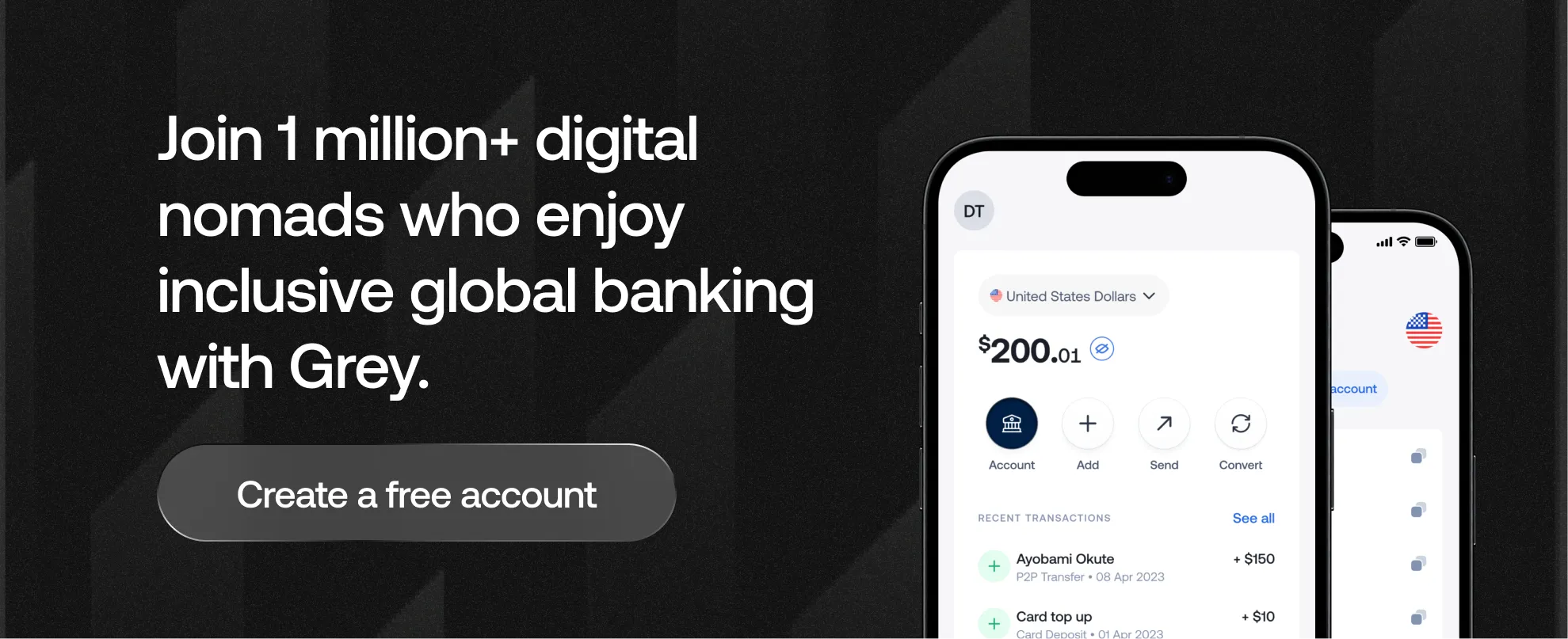

Did you know South Africa is the world’s fourth most popular digital nomad destination?
And it’s not just because of its rich culture and history. South Africa is also home to incredible wildlife like the Big Five (lion, leopard, elephant, rhino, and buffalo), stunning landscapes like Table Mountain and the Blyde River Canyon and delectable food and wine.
Also read: Top 7 must-visit historical sites in South Africa
But as a digital nomad, you must always be mindful of your spending habits because expenses can quickly add up. In this article, we’ll walk you through simple, real-world budgeting tips to help you maximise your money and time in South Africa.
Accommodation is always a major expense for any digital nomad, and as always, the cost varies based on the location and type of stay.
In South Africa, a one-bedroom apartment in the city centre typically costs around R8,000 ($450) per month, while a three-bedroom can go up to R16,000 ($893). If you're looking to save, consider living outside the city centre, rent drops to about R6,500 ($393) for a one-bedroom and R12,500 ($698)for a three-bedroom.
South Africa’s food scene is a mix of African, Indian, Dutch, and Malaysian influences showing its multicultural society. As a digital nomad, trying different local dishes is a part of the experience and some must-try foods in South Africa include Biltong, fish and chips, malva pudding, and bobotie.
Eating out is relatively affordable. A meal at a regular restaurant costs around R165 ($9.20), while a three-course meal at a mid-range restaurant averages R700 ($39).
You can easily get around in South Africa using public transport, with one-way tickets typically costing between R13 and R30 ($0.72-$1.67). However, in major cities like Cape Town, Johannesburg, and Durban, most locals prefer using ridesharing apps like Bolt and Uber, which are affordable and widely available.
Minibus taxis are another common option, but they can confuse newcomers and aren’t always the safest. Renting a car is a good idea if you plan to stay longer or explore areas outside the cities. Daily rates range from $15 to $63, while weekly rentals cost about $140 to $297, depending on the vehicle and location.
For digital nomads, having access to a good coworking space can make all the difference. There are plenty of great options in South Africa, including WeWork, Workshop17, and Spaces. These spaces offer great amenities and a chance to connect with other remote workers.
Monthly prices usually range from R1,190 to R4,090 ($67–$229), depending on the location, type of workspace, and whether community events or extras are included.
When renting accommodation in South Africa, utilities like electricity, water, heating, and garbage collection are sometimes included in the rent, but not always. Basic utilities for a one-bedroom apartment cost between R1,500 - R2,000 ($84 - $112) per month, depending on your location and usage.
South Africa’s major cities vary widely in cost. Cape Town and Johannesburg are more expensive, especially in tourist or central areas. If you want to stretch your money, consider more affordable cities like Gqeberha (Port Elizabeth), East London, or George.
Eating out might be affordable, but cooking can save you even more. You can lower your food expenses by buying fresh produce from local markets or getting great-value groceries from supermarkets like Checkers and Pick n Pay.
If you’ll be staying a while, avoid short-term stays to save more money. You can look for long-stay deals on Airbnb or co-living stays. Many hosts offer discounts for stays longer than a week or a month. You can also explore co-living options that provide one price for accommodation, utilities, and coworking spaces.
Also read: Seven proven hacks to slash accommodation costs
It’s easy to lose track of where your money is going, especially when paying in cash or foreign currencies. To stay on top of things, use a simple spreadsheet or a budgeting app like Mint or PocketGuard to track your daily and monthly expenses. You can also use Grey’s spending insights to monitor your transactions and see exactly where your money goes.
Some expenses won’t appear daily but can pile up to take a big part of your budget, such as visa extensions, scooter repairs, health checkups, or short trips to nearby islands. Set aside a small monthly buffer, like $50 - $100, to cover these, so you’re not caught off guard.
Also read: Smart budgeting tips for digital nomads in 2024
One of the easiest ways to lose money as a digital nomad is through hidden currency conversion fees. However, with multi-currency providers like Grey, you can save on these fees by holding and sending money directly in different currencies, including the Indonesian rupiah. That means you can pay for things locally without hidden charges and enjoy your stay without worrying about exchange rates.
Also read: How to send and receive British pounds in South Africa
If you earn dollars or euros, keeping an eye on exchange rates before converting large amounts to rands is smart. With Grey’s currency converter, you can track real-time mid-market rates and wait for the right moment to send or convert your money, helping you get more value from every transaction.
Have a memorable stay in South Africa without burning through your savings. And with Grey, you can manage your money seamlessly with zero hassles and focus on enjoying your trip to the fullest.
Also read: Best cities for digital nomads in Africa




.svg)
Back to top